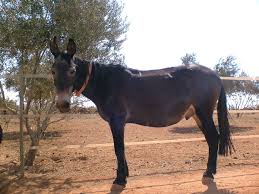ANML SC - Horse breeds
1/37
Earn XP
Description and Tags
Breeds of x horses with characteristics
Name | Mastery | Learn | Test | Matching | Spaced |
|---|
No study sessions yet.
38 Terms
American Quarter Horse ( U.S )
Originated more than 300 years ago
Racing down open areas down the main street in settlement towns
Distance was no longer than a ¼ mile
Can run ¼ mile faster than any other breed
Fast starters, great at turning, and stopping, great speeds at short distances
All American Futurity and Derby and Ruidoso Downs
2 types
Racing type
Infusion of thoroughbred breed
Working type
Roping, working cattle, pleasure riding
Largest registered breed in the world
Up to 55 mph in less than 21 seconds
Colors (most common) : Chestnut, Sorrel Bay, and Dun
14.2 - 15.2 hands (4 inches) high
1,000 - 1250 lbs
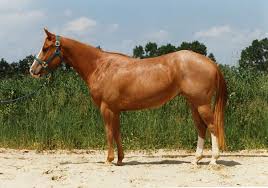
American Saddlebred
Traced back to 4-mile race stallion Denmark foaled in 1939
Developed in plantation states of the south
Used for long distant rides, parades, jumping, work
3 gated (walk, trot, canter)
5 gaited (slow, gait, rack)
Colors: bay, brown, gray, chestnut, roan, black, and golden
15-16 hands
1,000 - 1,500 lbs
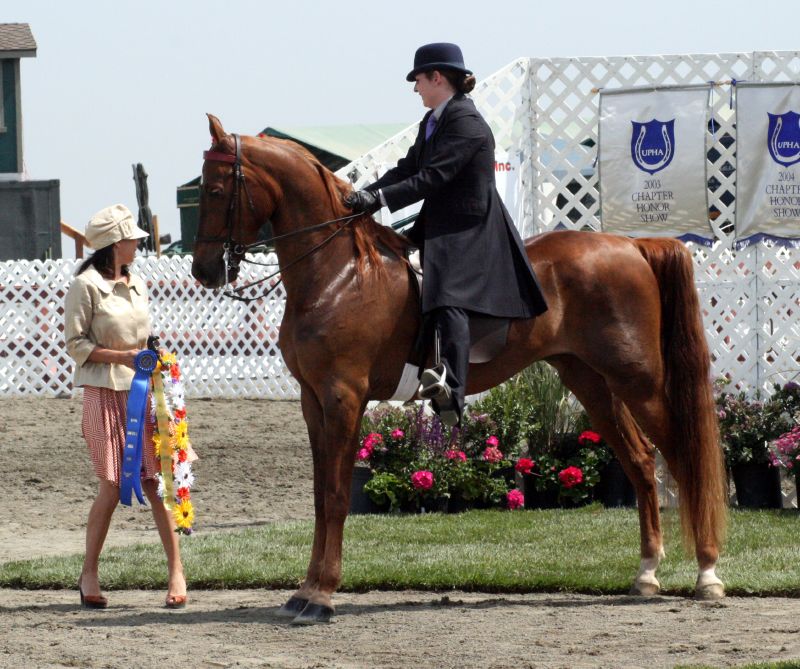
Arabian
Originated in either Egypt or Libya
“Easy keeper”
Maintains good condition on low levels of grain and pasture
Gentle disposition
Prefers companionship to humans sometimes
Dish face
One less vertebrate in some
Lumbar 5 instead of 6
Dominate the sport of endurance racing
Tevis cup
Pleasure riding, racing, showing and as a stock horse
Colors: bay, gray, chestnut, white or black
14.2 - 15.2 hands
850 - 1,000 lbs
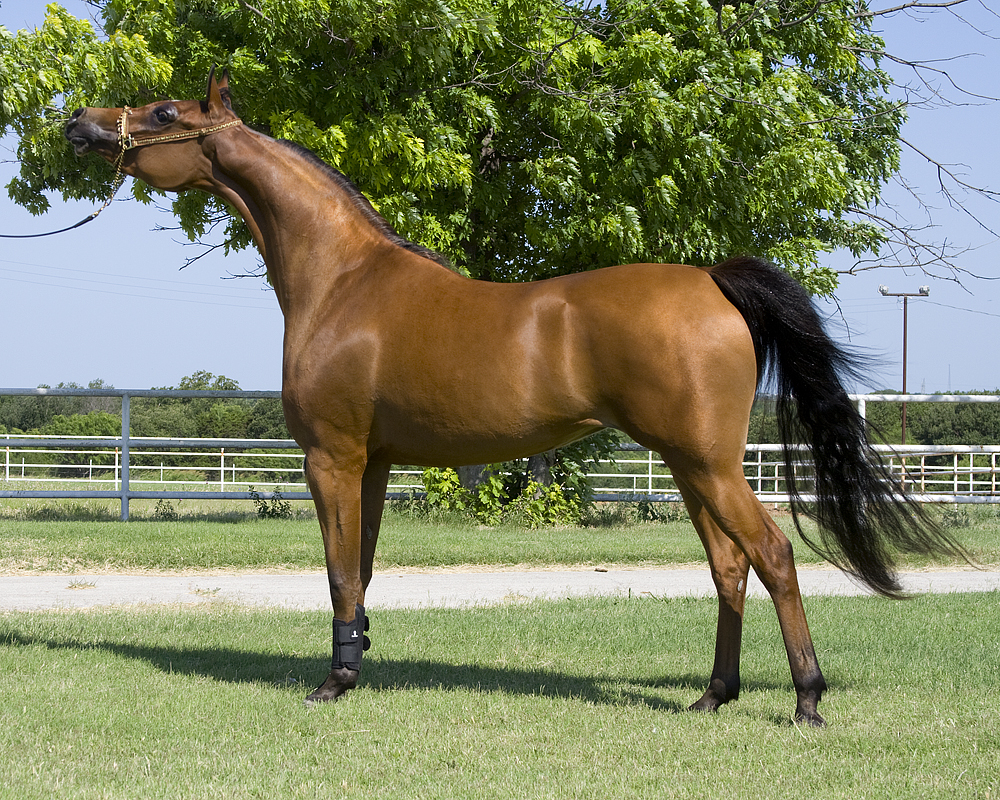
Morgan
Descendent of Justin Morgan the racing horse that never lost a race
Outpull, outrun, outjump or outdo any horse
Known for being quiet, docile, sturdy, and all purpose
Used for stocking and driving
Straight long legs and thick neck
Only survivor of Battle of Little Big Horns: Comanche, Senior Captain Keogh’s Morgan
Bay, brown, black, chestnut
14.2 - 16 hands
800 - 1,200 lbs
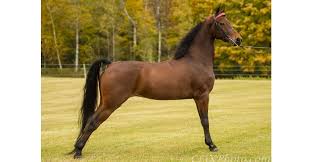
Morab
Morgan x Arabian
Developed in California
Shows, pleasure and endurance riding, and ranch work
Variety of colors
14.3 - 15 hands
950 - 1,200 lbs

Missouri Fox Trotter
Crossed with American Saddlebred, Standardbred and Tennessee walking horse
Fox trot gait
Hind foot strikes the ground just ahead of diagonal front foot
Used as a pleasure / stock horse and for trail riding
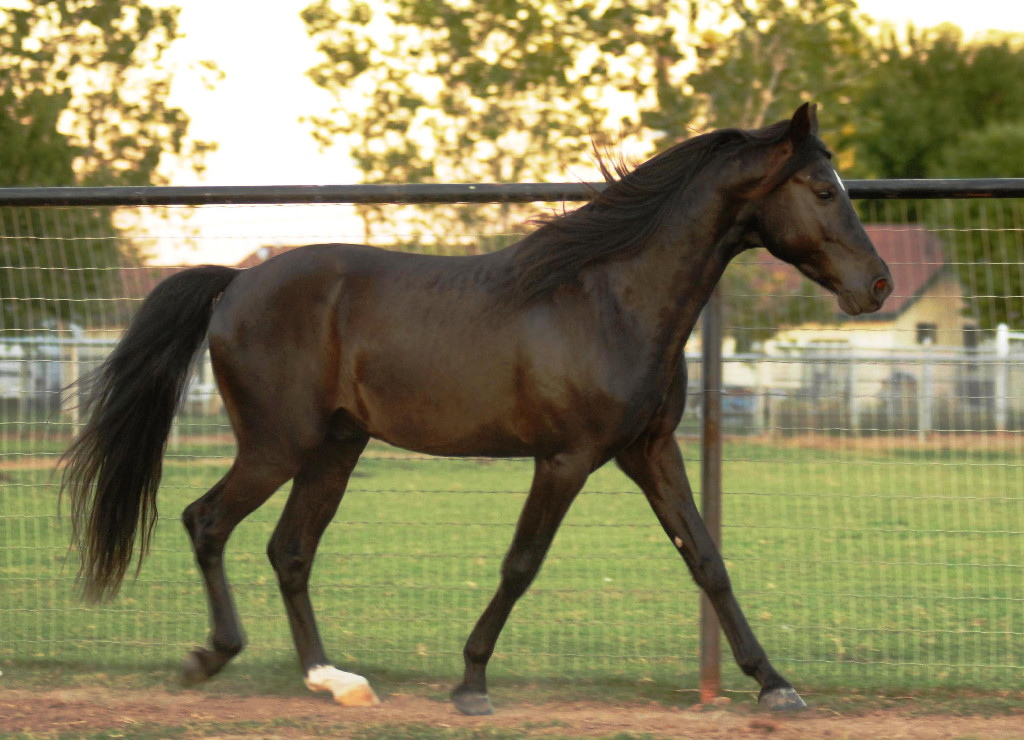
Peruvian Paso
Originated in Peru 450 years ago
Broken gait
Legs on same side move together, but hind foot strikes the ground a fraction of a second before the front foot —> 4 beat gait
Smoothest riding horse in the world
Before 17th century most of world’s horses were naturally gaited (four beat gait)
Horses that were not were called “boneshakers”
Only pack animals
For servants
Knights would ride a naturally gaited horse but keep a trotting horse for battle
After 17th century trotting horses gained popularity
Pulling wheeled vehicles
Working cattle
Pleasure and parade
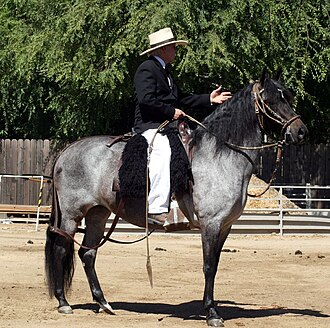
Standardbred
Crossing of Thoroughbred stallion Messenger w/ native mares
Considered fastest harness horses until 1800s when Morgans took over
Hambletonian was born 1849 and took back reputation for standardbreds
90% of all standardbreds can be traced back to him
2 types
Trotter: nongaited
Pacer: gaited
Standard registry: mile - 2 min 30s for a trot and 2 min 35s for a pace
Harness racing, shows
Bay, brown, chestnut, black, gray, roans, duns
14.2 - 16.2 hands
850 - 1,200 lbs
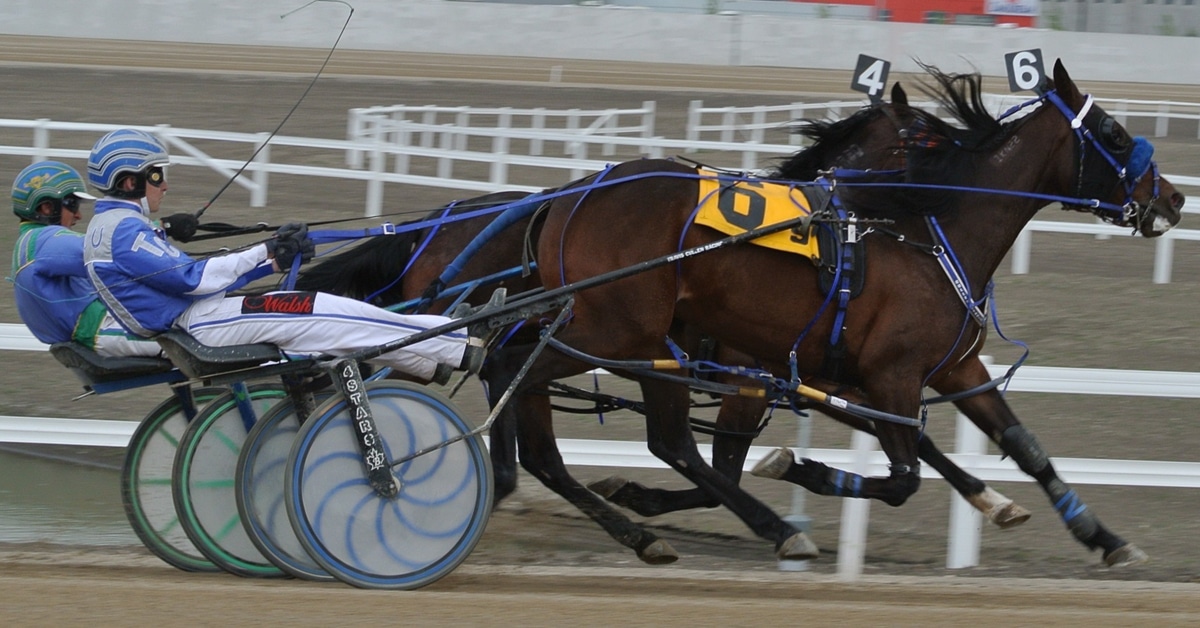
Tennessee Walking Horse
Developed in Tennessee
Standardbred, Thoroughbred, American Saddle Horse, and Morgan Blood
“Gentlemen of Equines”
Gentle disposition
Gliding sensation
Known for “running walk”
Inherited and cannot be taught to a horse who does not have it nautrally
4 beat gait w/ gliding motion and a bobbing of the head and swinging of ears w/ each step
Also have a flat foot walk and canter
Plantation horse for owner inspecting immense fields, country doctors who spent long times on a horse, preachers who could plan their sermons
Pleasure walking, and show
Variety of colors
15 - 16 hands
1, 000 - 1, 200 lbs
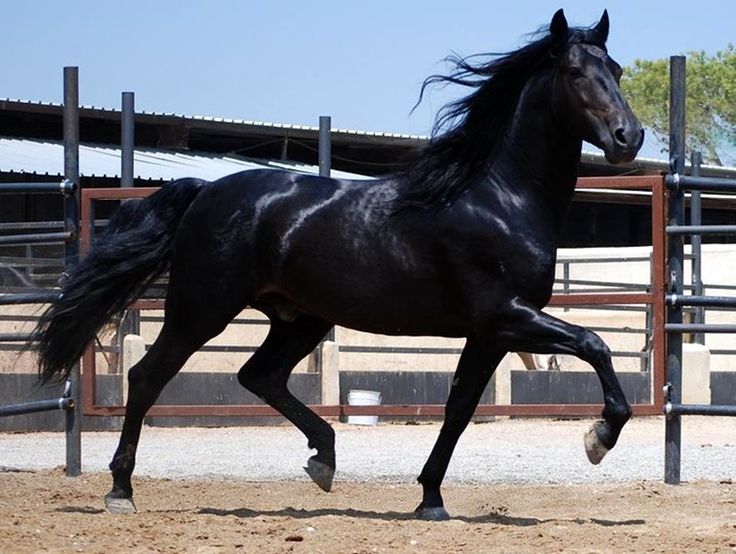
Thoroughbred
Early days few breeding records b/c did not name horse until it proved outstanding ability
Weatherby published first stud book in 1791
Col. Sanders D. Bruce published American Stud Book
Jockey club took it over
Hold identity of every kind of this species that competes or bred
One of the most sophisticated databases holding more than 1.8 million horses tracing back to the late 1800s
Refined conformation
Long, straight, well-muscled legs
Racing, stock, polo mounts, and hunters
Kentucky Derby, Belmont Stakes, Preakness (Triple crown winner)
Bay, brown, chestnut, black, roan
15 - 17 hands
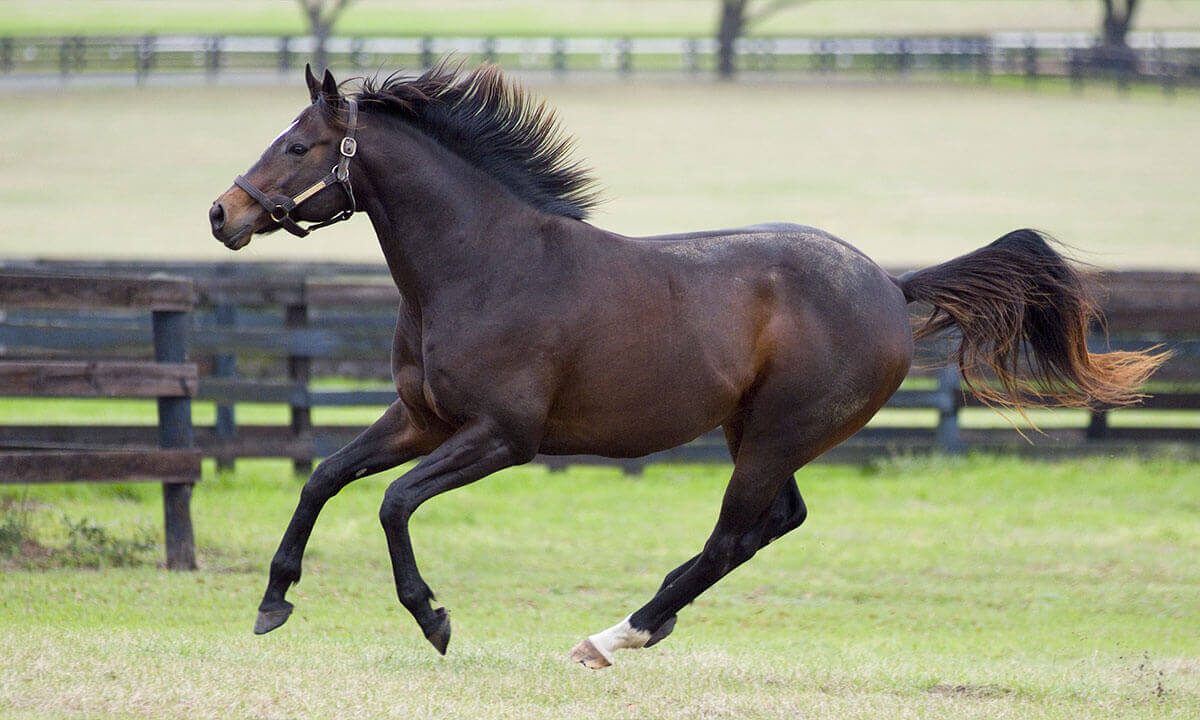
Andalusians
Known as Purebred Spanish Horse
Oriental horses brought by the Moors when they invaded Spain and crossed with Spanish horses
Bred primarily by Carthusian Monks in the Middle Ages
Long manes and tails
Flat or convex nose, small ears, large neck, massive chest, and lean quarters
Trotting breed
White or light gray or bay
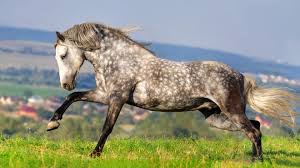
Draft horses
Power to pull heavy loads esp in the field, forest and town
Calm and gentle giants
War horses of Medieval times
American Cream
Origin in Iowa from mare named Old Granny
Unusual for mare to have such prepotency
White mane and tail, amber eyes, pink skin, rich cream color
Currently on endangered species list since 1980s
1,600 - 2,000 lbs
15 - 16.3 hands
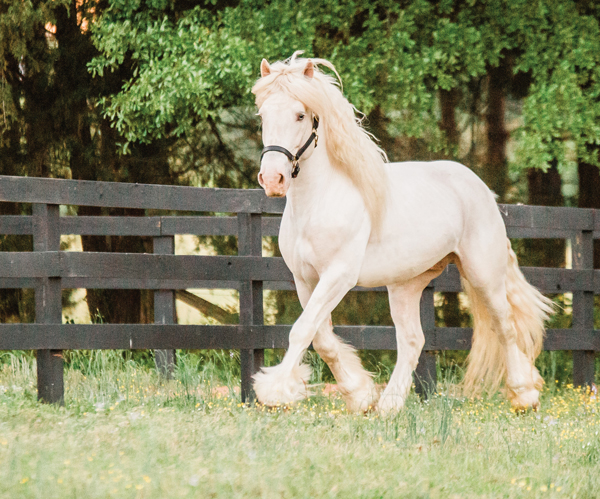
Belgian
Belgium w/ fertile soil and abundant rainfall had plenty of pastures, hay and grain to develop a heavy powerful breed
Imported to US for draft purposes in 1866 popularity grew until WWII and the invention of row-cropped tractors
Popularity beginning to rise again
Farm work and exhibition
Lowest set and most massive of draft horses
Bay, chestnut, roan
15,2 - 17 hands
1,000 - 2,400 lbs
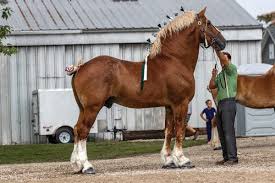
Clydesdale
Lanarkshire Scotland
Beer Wagon Horse
Farm work & exhibition
Known for its massive size, carrying style, distinctive coloring, and feathering on its legs
One of the judging for this breed is their foot must be lifted clearly off the ground (high stepping)
Bay or brown w/ white markings, black manes, feathered legs
15.2 - 17 hands
1,700 - 2,000 hands

Percheron
From French District of La Perche
Some Flemish and Arabian blood
Popularity rose among farmers during prewar
By 1930s 3X as many percherons as any other draft breed
Farm tractor almost made the horse extinct except a handful of farmers and the Amish kept them alive
Black or Gray
15.2 - 17 hands
1,700 - 2,000 lbs
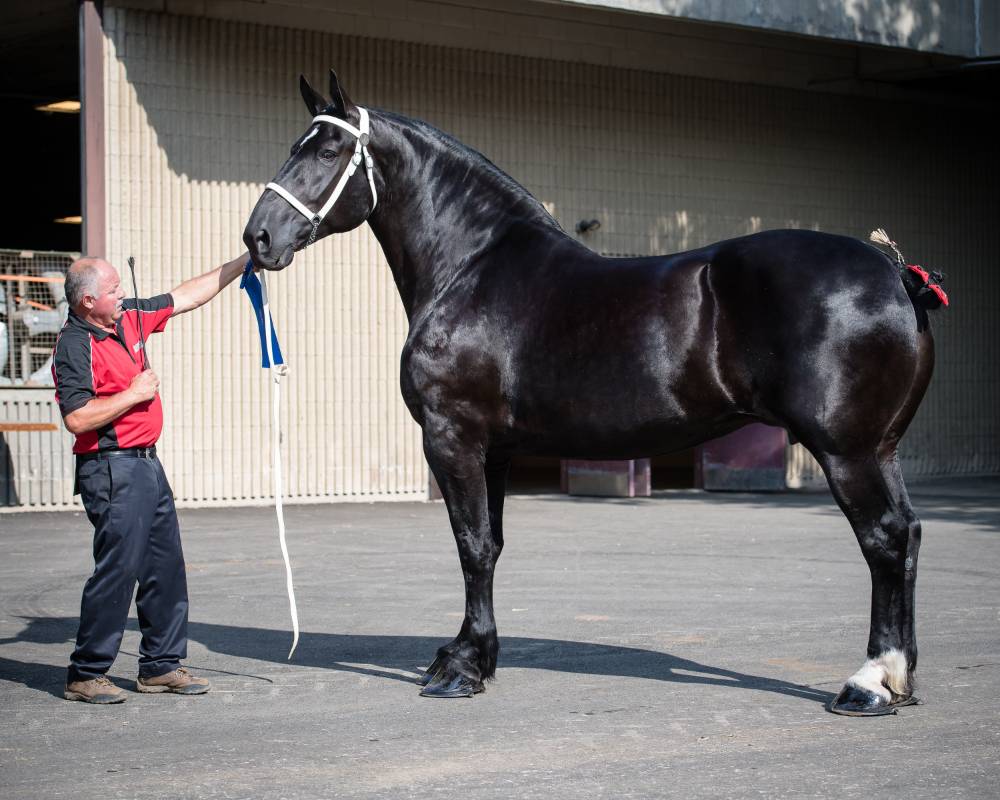
Shire
Lincolnshire New England
Robert Blakewell (father of animal science) contributed to its development
Tallest of drafts
Farmwork and Exhibition
Bay, brown, black w/ white markings
16. 2 - 17 hands
1,800 - 2,200 lbs
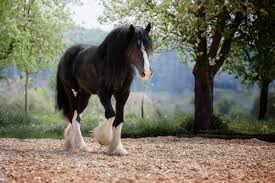
Suffolk
Suffolk, England
One of the oldest breeds
Crisp’s horse of Ufford was the foundation stallion in 1768
Short and strongly muscled forearms, thighs, upright shoulders, short and strong backs
Smallest of draft horses
Desire of animal to please its master
Possessed “Heart” : an inner determination to push on
Hitched to a tree and told to pull
Chestnut
15.2 - 16.2 hands
1,500 - 1,900 lbs
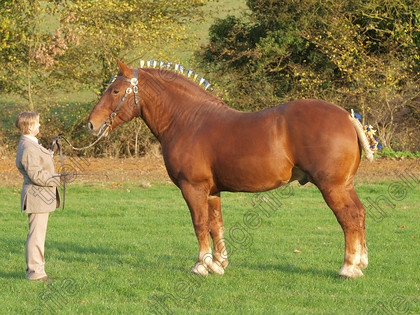
Appaloosa
Ancient cave drawings in France and Chinese 17th century art
Developed by Nez Perce Indians from Spanish spotted
Helped Chief Joseph and Nez Perce elude US Cavalry for months and fled over 1,300 miles
Characteristics that define them:
Mottled or Parti - colored skin
White scelra
Striped hooves
Blanket (solid white w/ contrasting base color), blanket w/ spots, spots, roan, roan blanket w/ spots, solid
Gentle disposition
Stock, racing, pleasure, parade
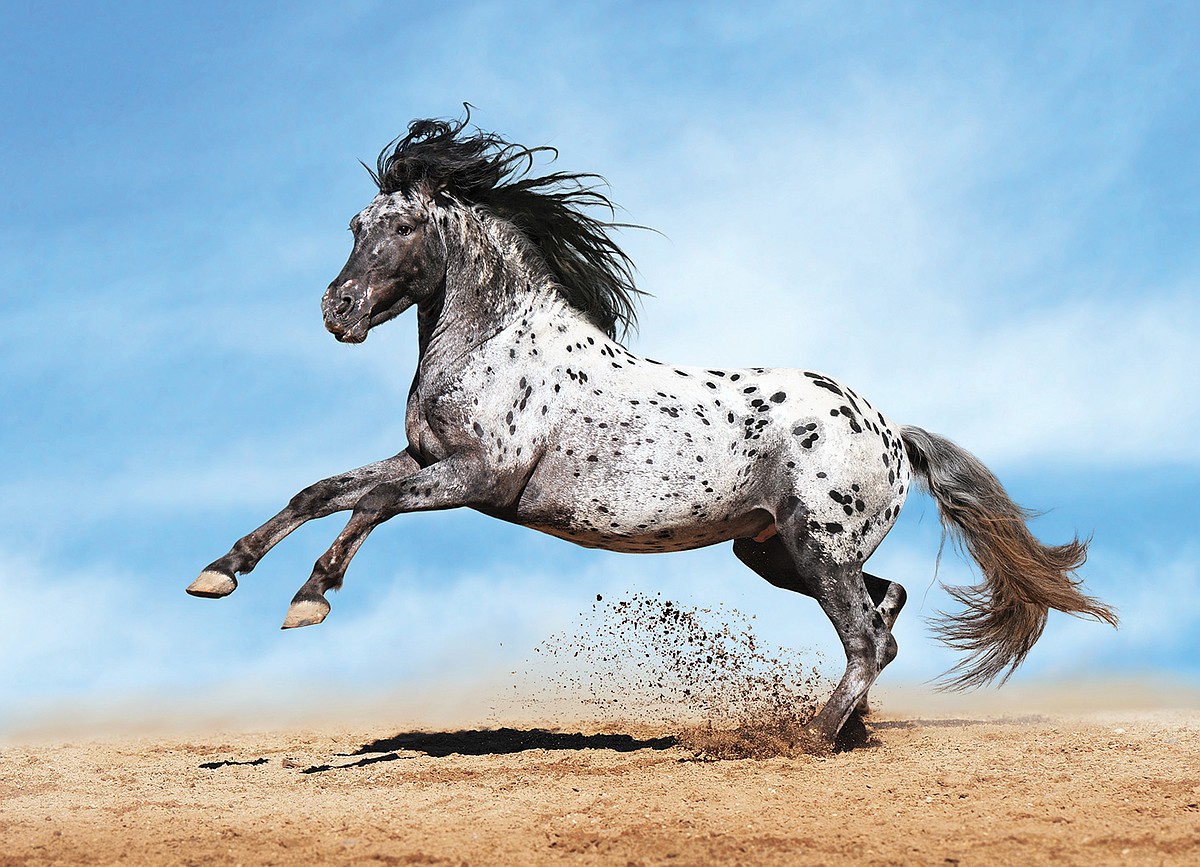
Paint
Two toned horses introduced by Spanish explorers
White and almost any color of the equine spectrum
Registry: Must have parents registered w/ American Paint Horse Association, American Quarter Horse Association, or the Jockey Club or Thoroughbreds
Stockier and more powerfully muscled than light breeds
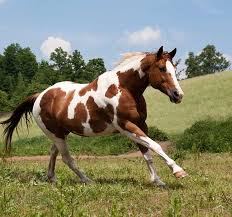
Color breeds: Pinto
Patches of white and any color
Can be any breed
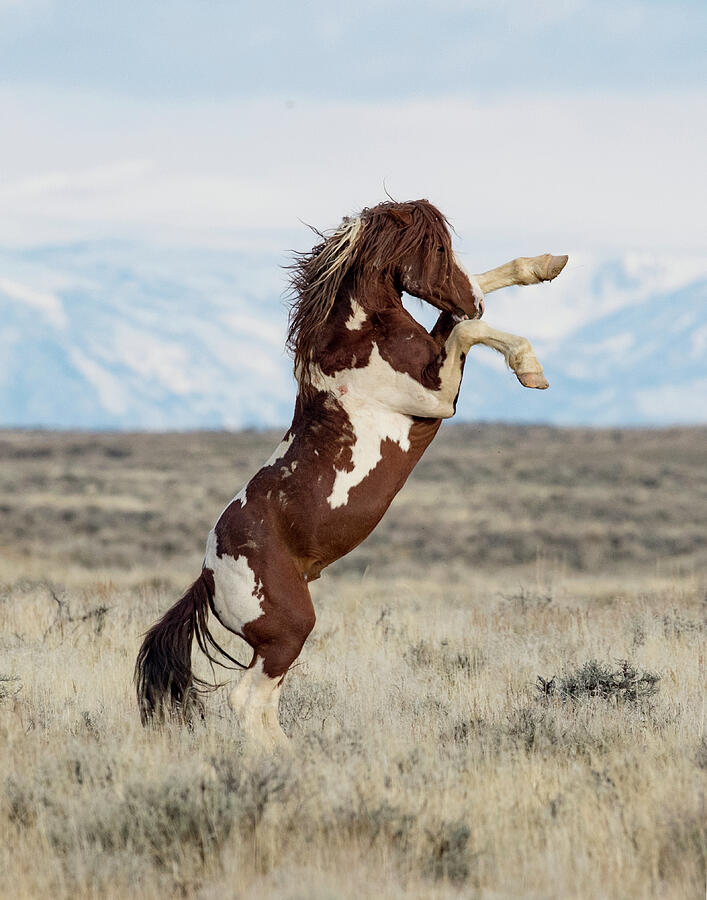
Color breeds: Piebald
Black and white
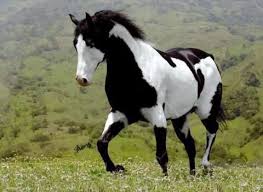
Glass eyes
Milky or white in appearance
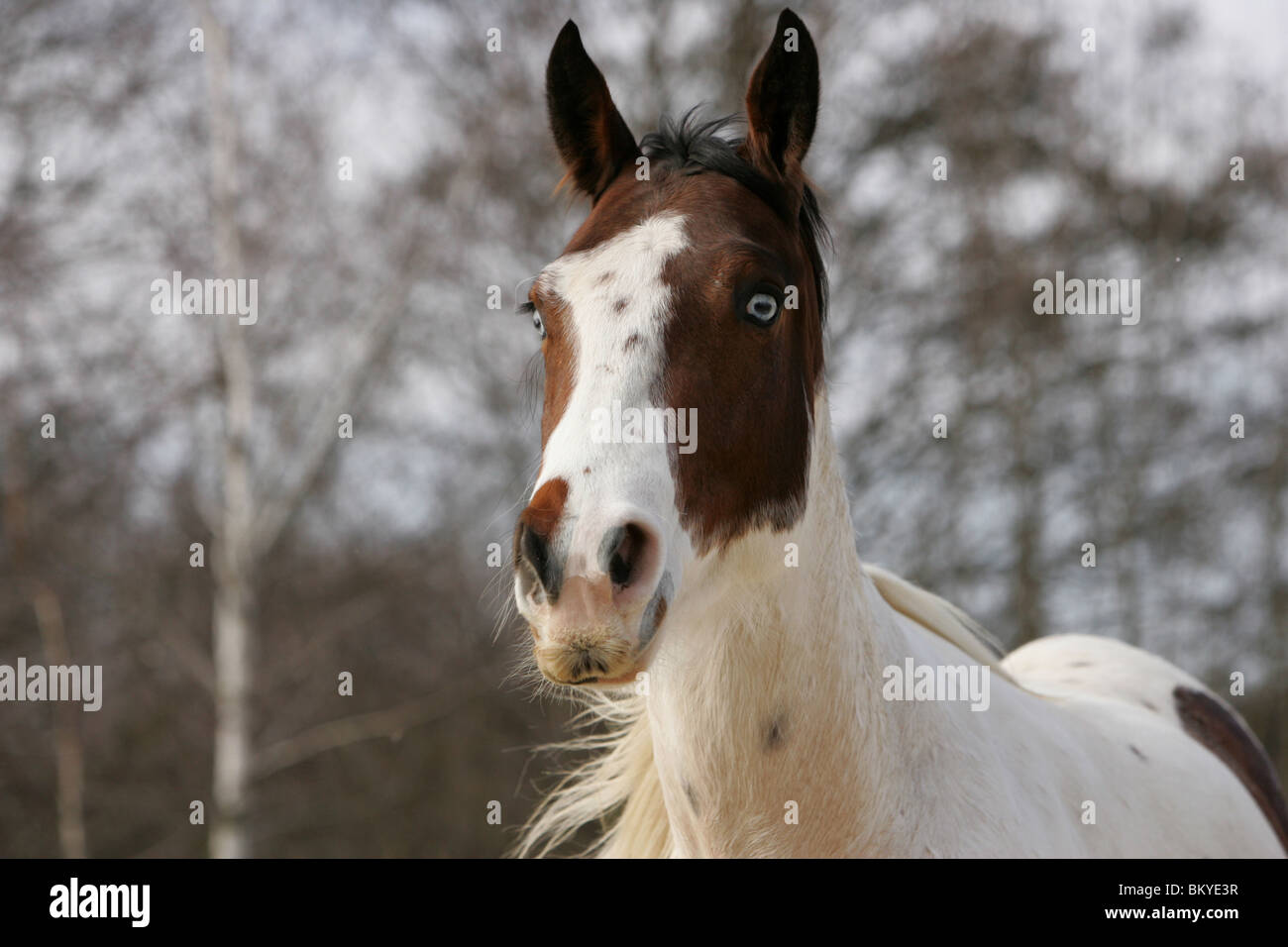
Tobiano
All four legs white below hock and knees
Spots are regular and distinctly oval or round and extend down the neck and chest appearing like a shield
Dark color on one or both flanks
Head markings are solid, blaze, strip, star or snip
Tail is two colors
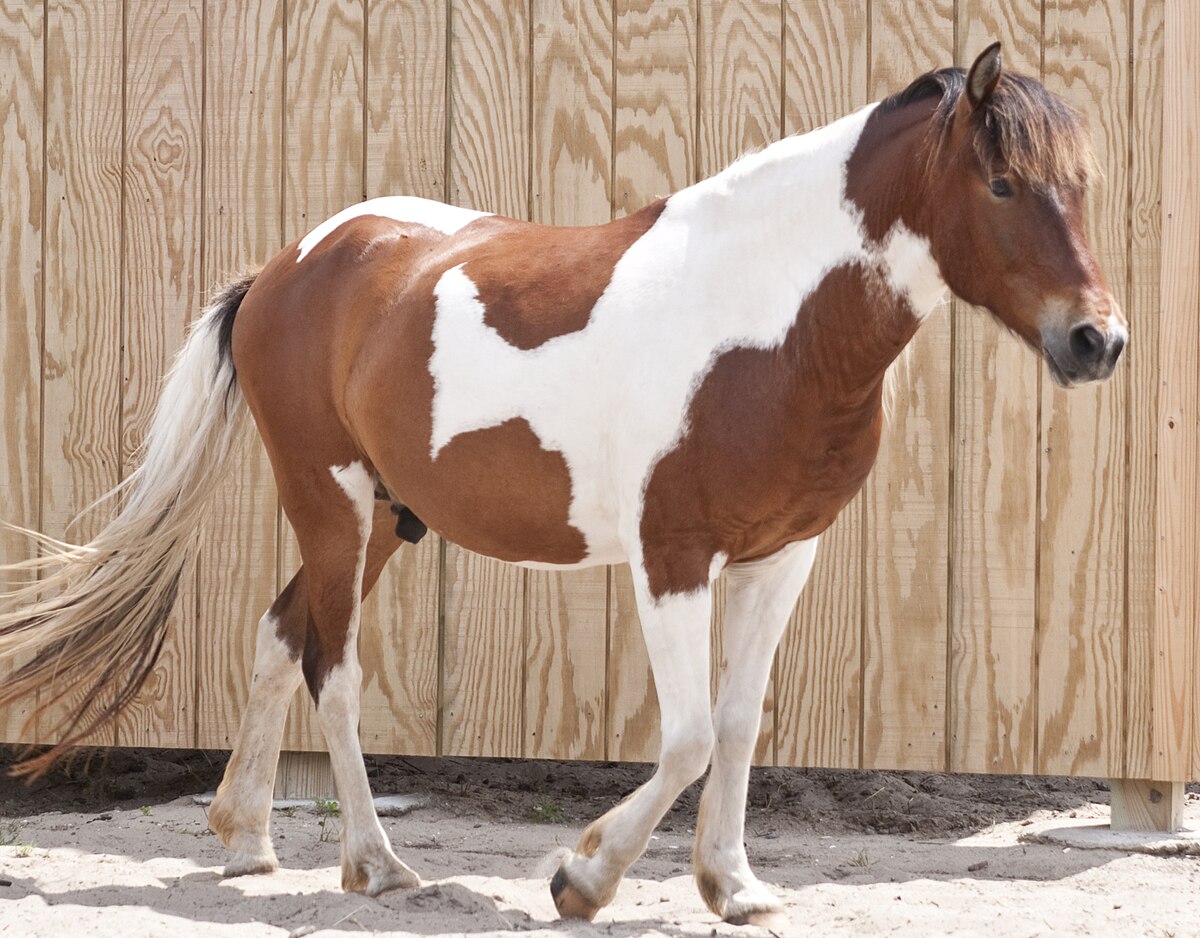
Overo
White will not cross back of horse between withers and tail
At least one leg is dark
White is irregular and scattered or splashy
Head markings often bald-faced, apron-faced
Lethal white syndrome
Foals homozygous for this mutated gene have undeveloped nerves to the GI tract usually die painfully within 72 hours
Heterozygous ok
Often humanely euthanized
Stock, pleasure, show, racing
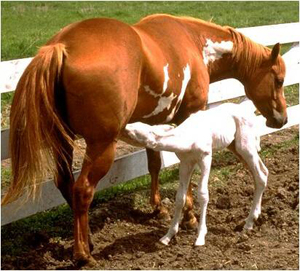
Palomino
Horse of emperors, kings, queens, Conquistadors, Indians of Southwest
Variations from light to dark of a US fourteen karat gold coin ( cream, yellow, gold, copper)
White main and tail
Stock type
Mostly quarter horses
Golden American Saddlebred
Saddlebreds
Pleasure type
Morgans, Arabians, Tennessee Walking Horse
Stock, parade, pleasure, saddle
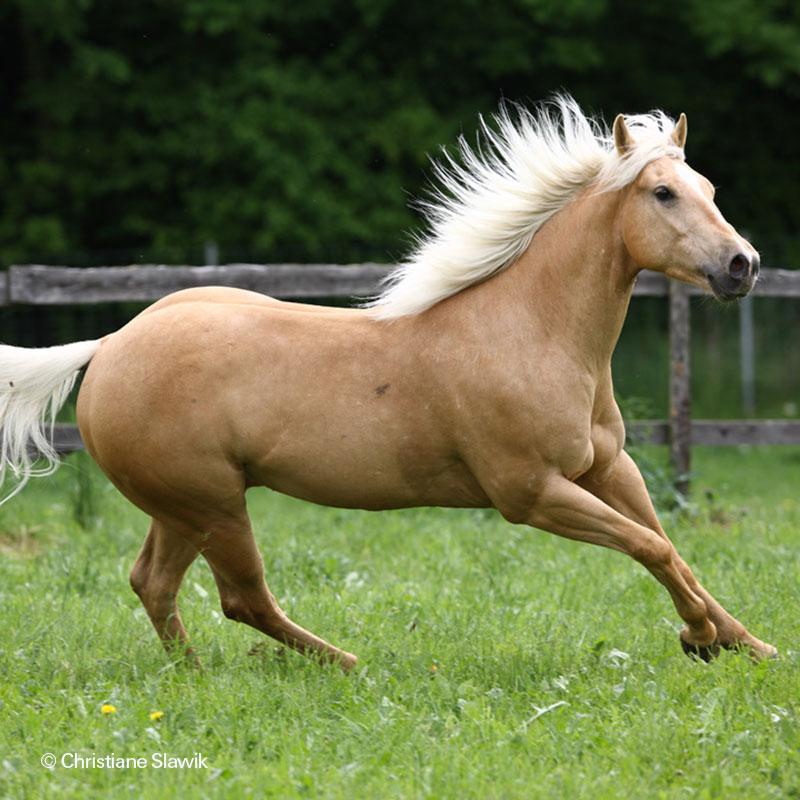
Pony breed
Smallest of horse breeds
14.2 hands and under
Heavy bodies
Draft horses for loads and carts
Connemara
Largest of pony breeds
Deep and compact body w/ short clean legs w/ ample bone
From Ireland
14.2 hands
Gray, black, bay, brown, dun, cream
Jumpers, show ponies, and mounts for children
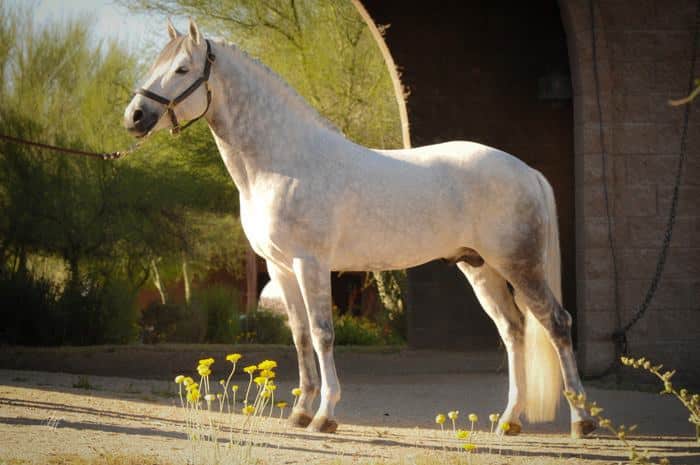
Pony of the Americas
Iowa
Black hand #1 was foundation stallion who was from Appaloosa mare and Shetland stallion
Arab, Thoroughbred, Quarter Horse, Appaloosa, Welsh Pony, and Shetland Pony all influenced
Accepted characteristics similar to appaloosa
Sclera, striped hooves, mottled skins
Children use as western type pony
11.2 - 13.2 hands
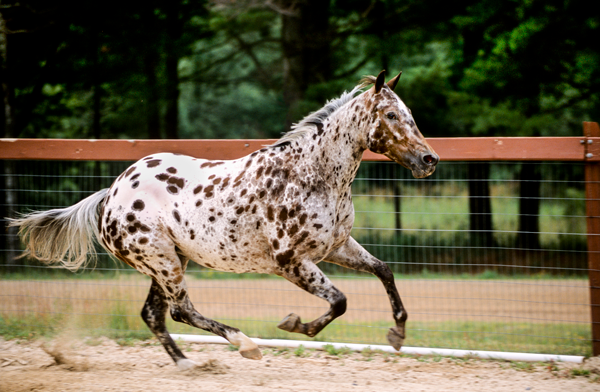
Shetland Pony
Shetland islands of Scotland
In Scotland carried peat to the cottages for fuel and seaweed for fertilizer
Strongest equid relative to its size
Imported into US to work in coal mines
Children’s mounts, harness horses, roadsters, racing
9.2 - 10 hands
300 - 400 lbs
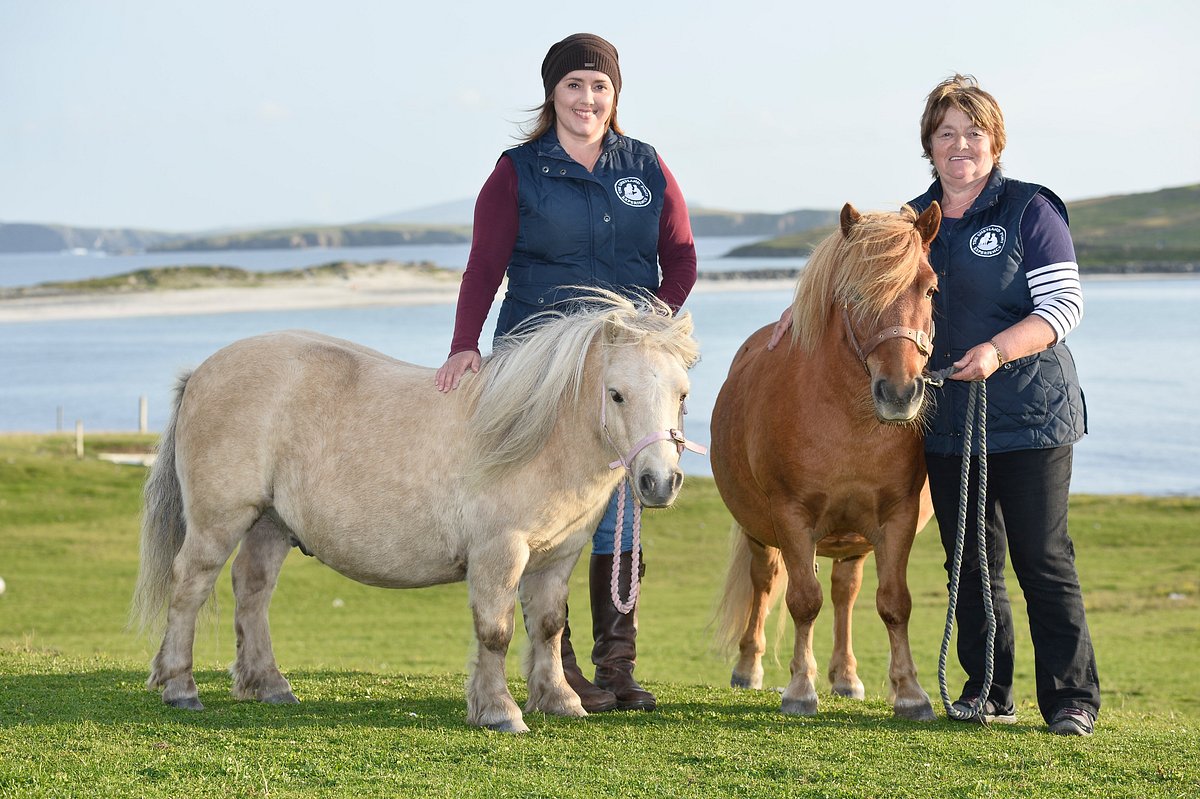
Welsh Pony
Wales
Rugged and agile due to harsh environment of Wales
Riding horse for children
Known for stamina, soundness, intelligence, even temperament
Pleasure, trail, hunting, racing, coal mines
Long neck, strong hindquarters and shoulders
Any color except piebald or skewbald (white patches on top of color)
Survived Henry VII’s decree that all horses under 15 hands be destroyed
11-13 hands
350 - 850 lbs
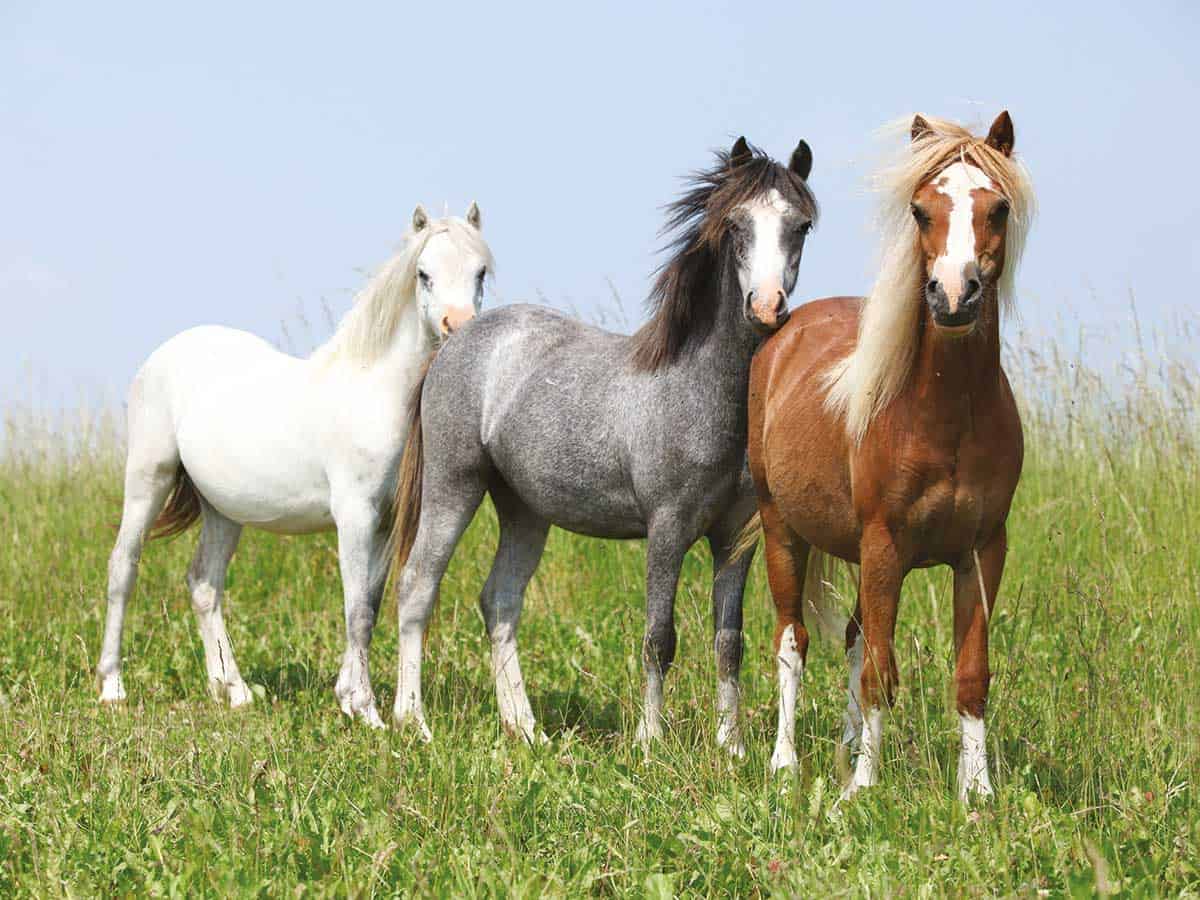
Miniature Horse
Max height allowed by registry 8.2 hands
Replicas of Quarterhorses, Arabs, Thoroughbreds, and Draft horses
Most are 5.3 - 6. 2 hands
Not dwarves, runts, or genetic mutations
Bred down to size yet maintaining perfect conformation
More value as they become smaller
Therapeutic programs for disabled children or adults or just for people who want a horse but can’t take care of 1,000 lb horses
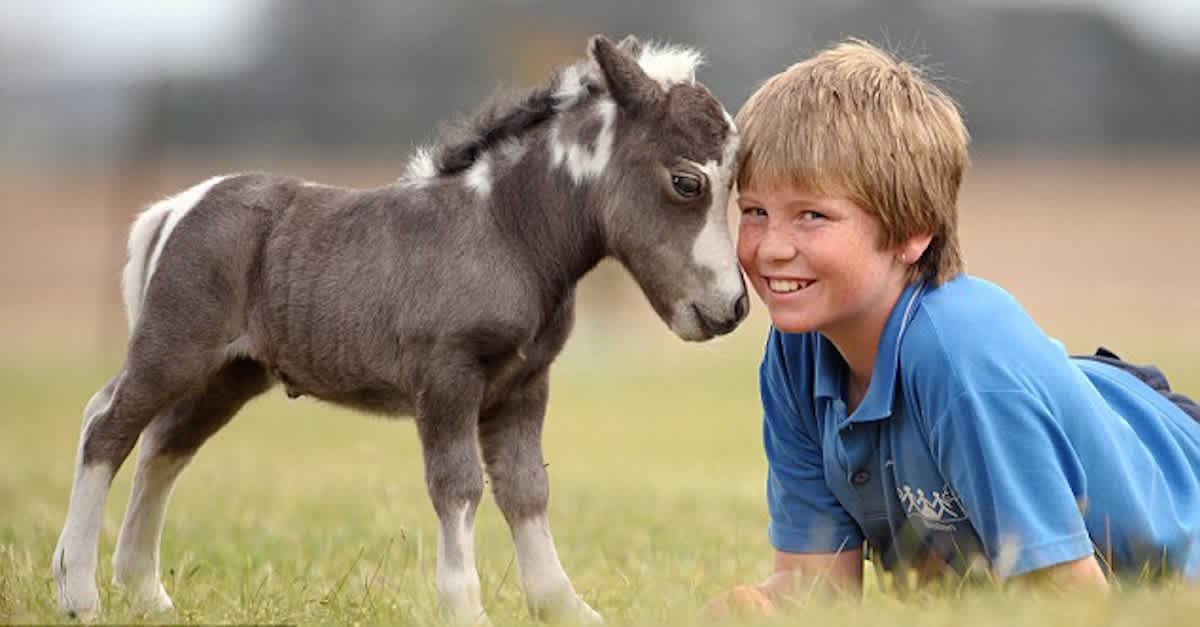
Warmbloods
middleweight horses primarily originating in Europe bred usually for sport
Drafts (cold bloods)
Light Breeds (hot bloods)
Hanoverian
Sport Horse Breed
This breed:
Hanover, Germany
War horses, olympics
Riding, driving, hunting, jumping, dressage, utility purposes
Calm level-headed in difficult situations
Stamina and hardy
16.2 hands
1,200 lbs
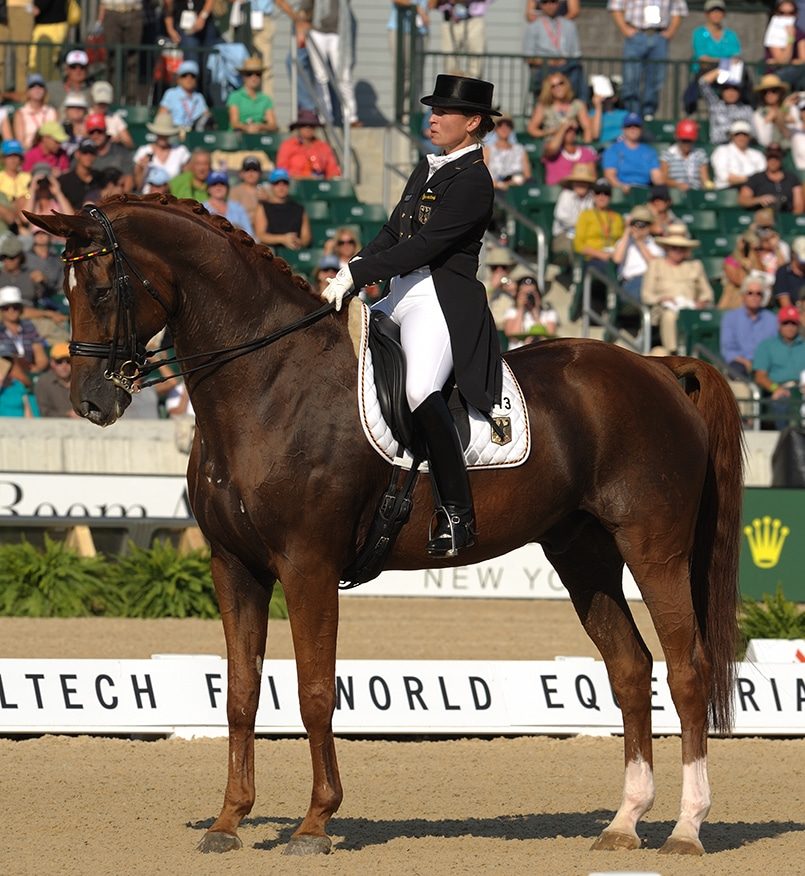
Holsteiner
Oldest breed of warmbloods
Germany
War
Jumping, dressage, driving
Bay, gray, chestnut
16-17 hands
Trakehner
Trakehner, Prussia
Throughbred and Arabian added to native horses in prussia
Alert, Intelligent, stable and anxious to please
Dressage, combined training, jumper and hunter
Elegant movement
Floating trot
Soft balanced canter
Large horse at 16-17 hands
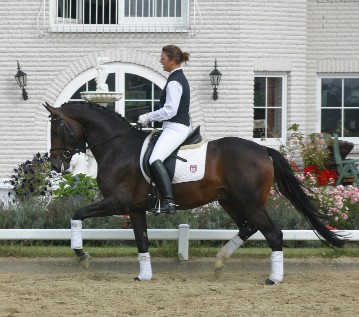
Donkey
Males and female names?
Male = Jack / Jackass
Female = Jenny / Jennet
Smaller in stature than horse
Less subject to lameness and injury
Less subject to hysteria and stress
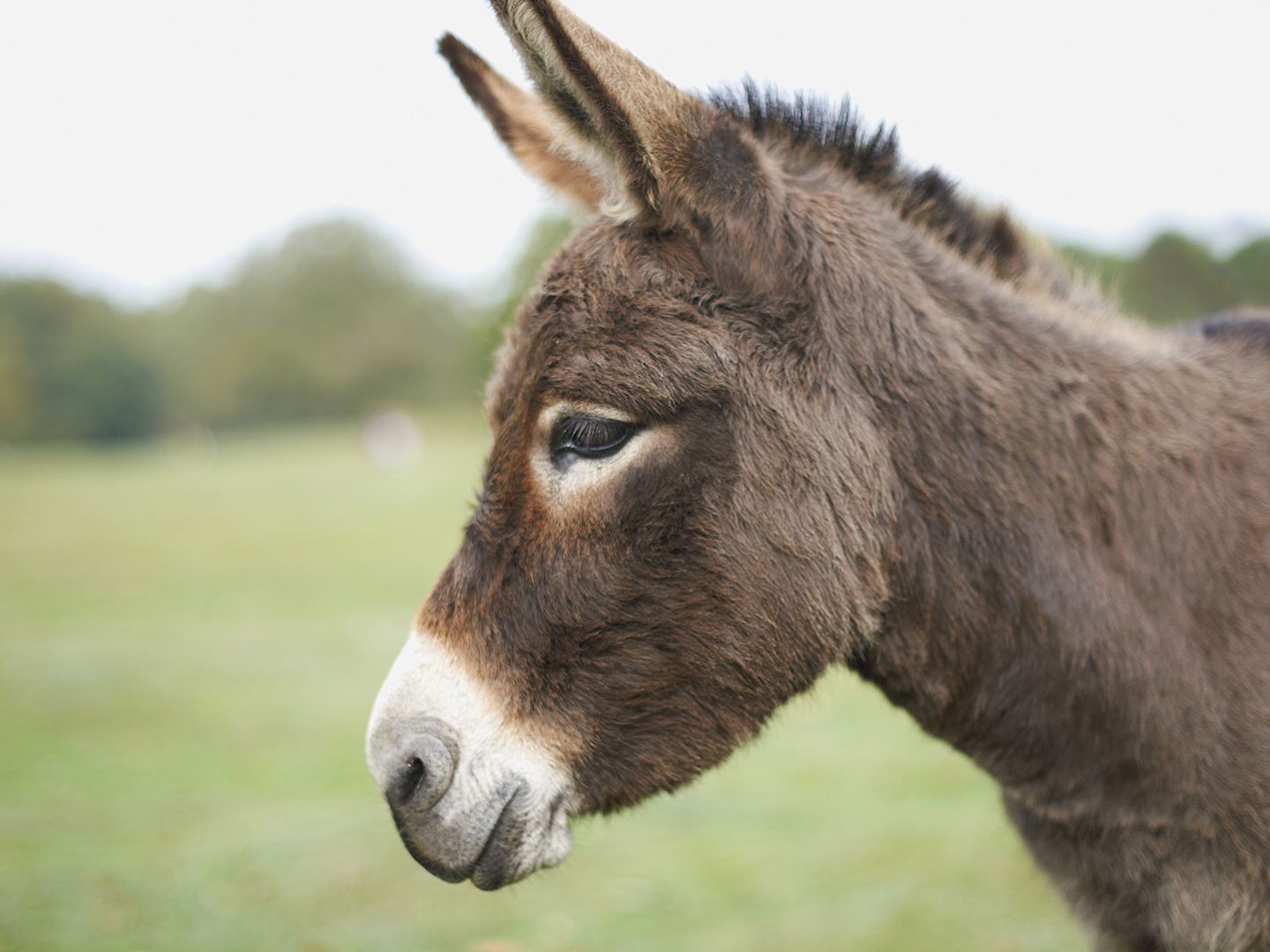
Mule
Male donkey x Female mare
Usually sterile
Can withstand higher temps, eat irregular meals, sounder of foot, can work in areas of stress
State animal
Missouri
